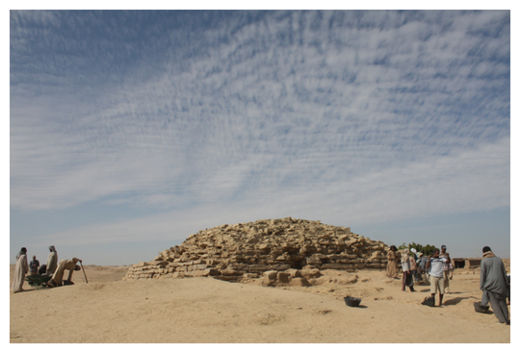
© Tell Edfu Project at the University of Chicago’s Oriental InstituteArchaeologists working near the ancient settlement of Edfu in southern Egypt have uncovered a step pyramid that dates back about 4,600 years.
Toronto - Archaeologists working near the ancient settlement of Edfu, in southern Egypt, have uncovered a step pyramid that dates back about 4,600 years, predating the Great Pyramid of Giza by at least a few decades.
The
step pyramid, which once stood as high as 43 feet (13 meters), is one of seven so-called "provincial" pyramids built by either the pharaoh Huni (reign ca. 2635-2610 B.C.) or Snefru (reign ca. 2610-2590 B.C.). Over time, the step pyramid's stone blocks were pillaged, and the monument was exposed to weathering, so today, it's only about 16 feet (5 m) tall.
Scattered throughout central and southern Egypt, the provincial pyramids are located near major settlements, have no internal chambers and were not intended for burial. Six of the seven pyramids have almost identical dimensions, including the newly uncovered one at Edfu, which is about 60 x 61 feet (18.4 x 18.6 m).
The purpose of these seven pyramids is a mystery. They may have been used as symbolic monuments dedicated to
the royal cult that affirmed the power of the king in the southern provinces.
"The similarities from one pyramid to the other are really amazing, and there is definitely a common plan," said Gregory Marouard, a research associate at the University of Chicago's Oriental Institute who led the work at the Edfu pyramid. On the east side of the newly uncovered pyramid, his team found the remains of an installation where food offerings appear to have been made - a discovery that is important for understanding this kind of pyramid since it provides clues as to what they were used for.
The team also found hieroglyphic graffiti incised on the outer faces of the pyramid. The inscriptions are located beside the remains of babies and children who were buried at the foot of the pyramid. The researchers think the inscriptions and burials date to long after the pyramid was built and that the structure was not originally intended as a burial place.
Initial results of the excavation were presented at a symposium held in Toronto recently by the Society for the Study of Egyptian Antiquities.
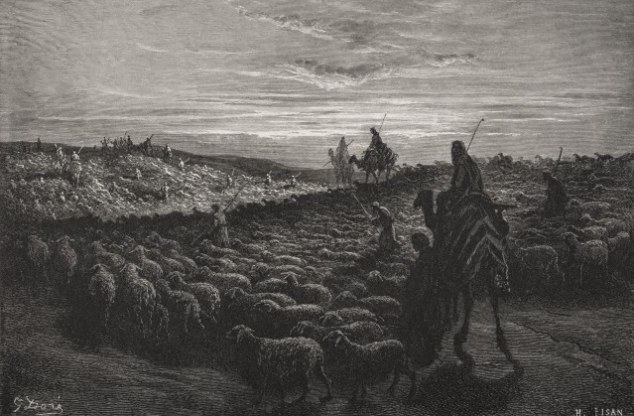

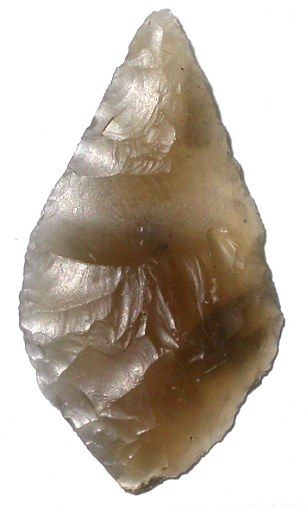

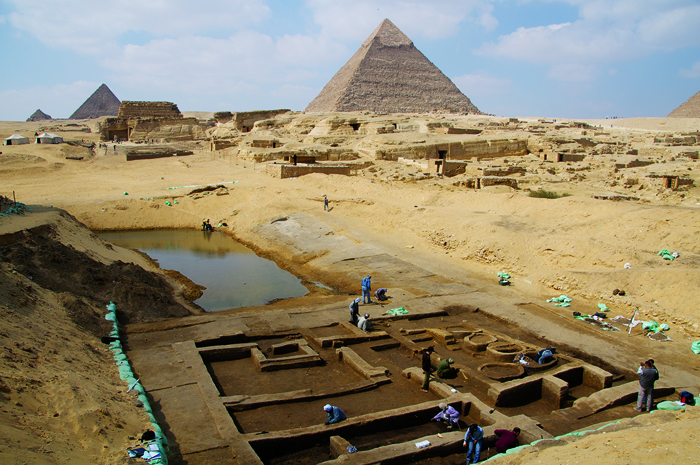

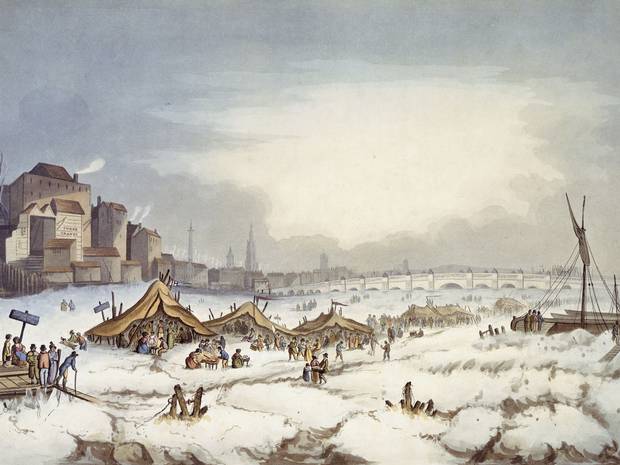
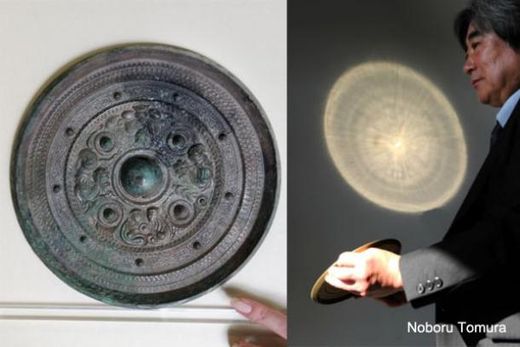
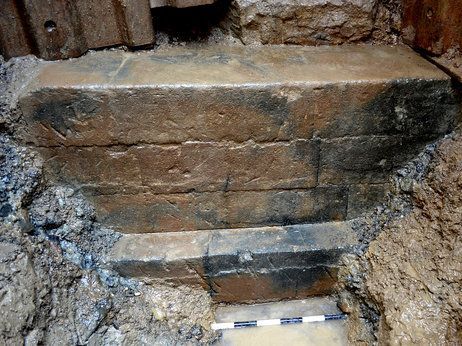
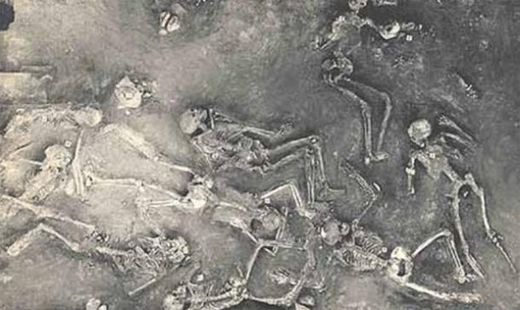



Comment: Astronomical positions are unreliable because of cyclic catastrophes - the passage of a comet close-by, for example, could alter the planet's tilt.
Then inserting them into historical timelines makes these dates even more unreliable because history is repeatedly rewritten post-cataclysm so that survivors can re-establish power.
Note at 2'35, the presenter says "no archaeological evidence has been uncovered on land thus far because this 'Rama civilization' existed so long ago"... this hardly constitutes scientific evidence for its historical existence!
At 5', the narrator speculates that "IF we shovel under the sand, we are sure to see this land bridge they built" 7.5k years ago! This is in no way a scientific examination of the known facts, nevertheless we publish this video because 'Rama's bridge' is a unique feature - as can be seen from the satellite images - and because of the possibility that it was man-made.
Without taking into account cyclic catastrophism, any examination of ancient history is always going to be sorely lacking. Nevertheless, there could be some historical basis to this myth. What if, for example, India and Sri Lanka were originally joined by a natural isthmus, one that was supplemented by man-made structures, and once the land-bridge was destroyed during a period of upheaval, it then passed into folk-legend as 'Rama's bridge'? As recently as the 15th century, it was possible to walk across until, it is said, the water-level of the channel was deepened during a cyclone in AD 1480.
It should also be pointed out that the Government of India, in an affidavit in the Supreme Court of India, said that "there is no historical proof of the bridge being built by 'Rama' or any other mythological or historical figures", and that this legend of the structure being man-made "has become an object of worship only recently."